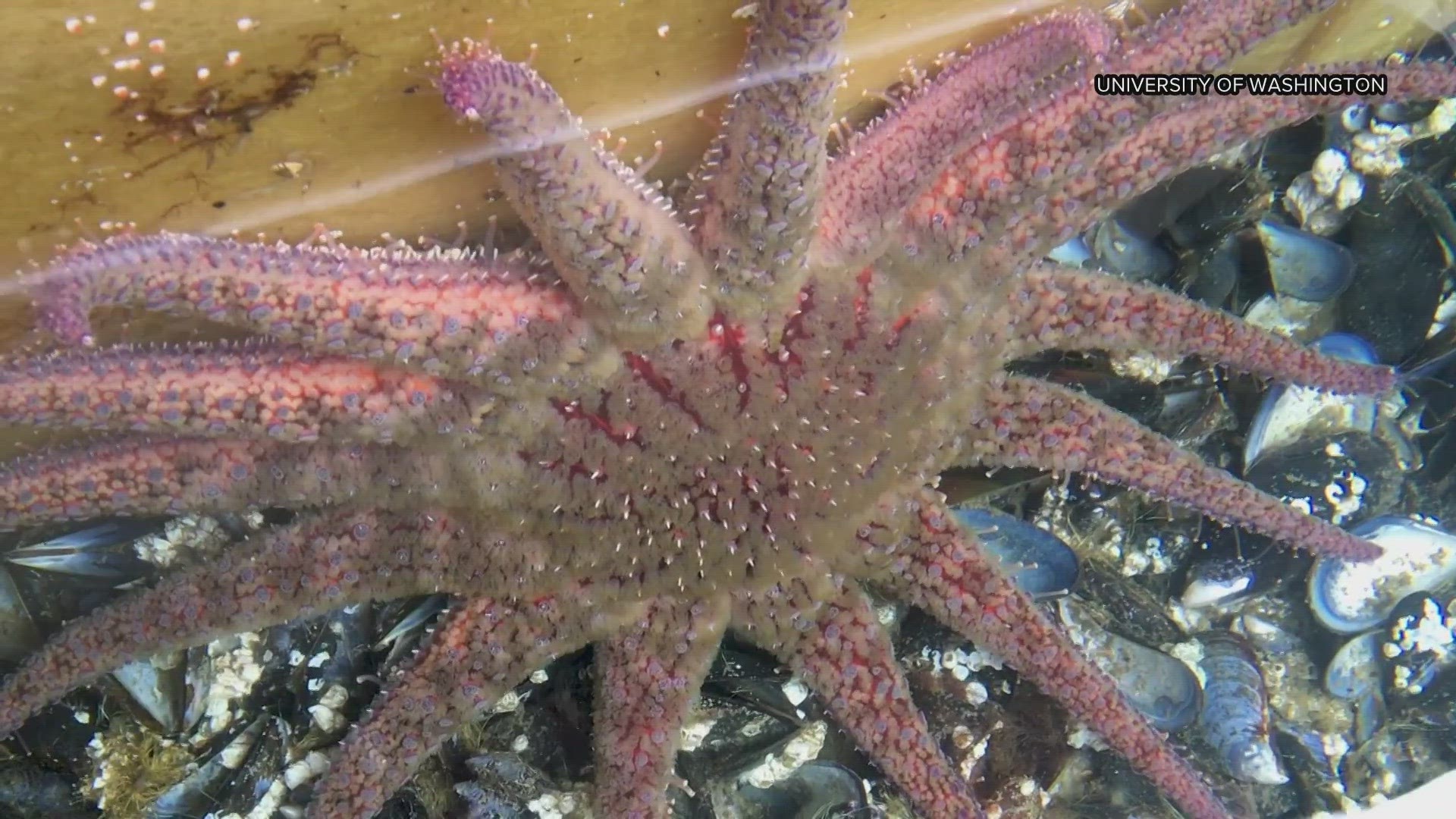SEATTLE —
University of Washington researchers are playing a key role in salvaging a species nearly wiped out by disease: the sunflower sea star.
Sunflower sea stars are a creature that has historically been easy to find along the West Coast, stretching as far south as Mexico and as far north as Alaska. Ten years ago, disease nearly wiped them out, except for small populations in Washington, British Columbia and Alaska.
“This was a species that was super common. This was not some species that was like, borderline already in trouble ... there were lots of sunflower stars - billions of sunflower stars up and down the coast - and most of them died and disappeared over the course of just a few years. It was quite remarkable,” said Jason Hodin, senior research scientist at the University of Washington’s Friday Harbor labs.
Those small remaining populations in the northwest now hold the key for rehabbing the entire species, all thanks to Hodin and his team, who are now breeding the lingering sea star population that still lives in the area.
The process started in 2019, when divers caught wild sunflower sea stars in the Friday Harbor area. From those wild sea stars, they bred the first round of larvae in 2020.
The larvae start as tiny creatures that look like small flecks swimming around in water. They then grow to around the size of a sand dollar in the first year, then explode in size in the years following, eventually growing to the size of a small tire after just a few years.
The sheer size of the sea stars is the main reason these UW researchers are only raising about a dozen of each generation. They simply don’t have enough room for more. But the goal is to create a process that another lab could implement on a larger scale.
“Our sort of eye on the prize as it were is to be thinking about the possibility of reintroducing this species into areas like California where they disappeared. So what we’re trying to do on a small scale is give an idea of how one could develop a larger facility in a place like California to raise thousands of these stars for possible release back into the wild,” he said.
The team of scientists has not released any of the lab grown sunflower sea stars yet. They’re giving them years to grow to a large enough size that will ensure survival from other predators in the wild. Hodin said their goal is to release the first batch of lab-grown sea stars this summer, then monitor them.
Impact on the environment
Hodin said their research is about more than the sea stars, but the domino effects the lack of sea stars has on ocean health.
“Sea stars tend to be predators. And what we’ve learned over the last many decades is that predators are actually really, really important for maintaining biodiversity. When you lose top predators in ecosystems, the ecosystem goes haywire,” he said.
He cited what happened about 10 years ago in California. As the sea star population quickly depleted, a heat wave hit the coast. With the predatory sea stars gone, the urchin population flourished. Urchins ate high amounts of kelp, which was already suffering because of the heat. The combination of the two events led to the kelp forest nearly disappearing in the Pacific Ocean, which is detrimental to ocean life.
“That would be like losing our entire Pacific Northwest forest. If we woke up one morning and found out ninety-percent of the trees in the Olympic Peninsula were suddenly disappeared, that’s literally what happened in California underwater over the course of a couple of years,” he said.
What killed them?
The disease that killed sunflower sea stars a decade ago caused them to develop wounds and basically fall apart, said Hodin.
He said a study came out in 2014 that claimed a virus was responsible for the deaths, but scientists now believe that’s not the culprit.
Researchers are currently still investigating the cause, but believe it might be a bacteria.
Hodin said the disease is still present, so that’s something they’re considering as they release these lab grown sea stars into the wild.
Currently, sunflower sea stars are being considered to be listed as ‘threatened’ under the Endangered Species Act. A decision on that is expected in the next few months.
Watch KING 5's environment coverage on YouTube

